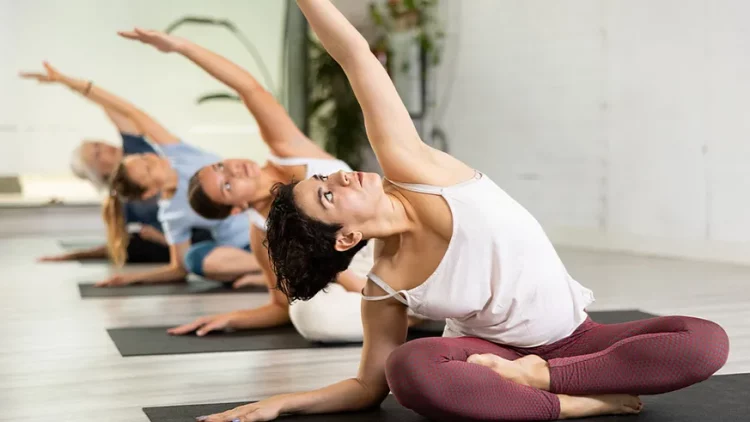Yoga has long been celebrated as a holistic practice that combines physical postures, breath control, and meditation to promote physical health and mental well-being. Traditionally rooted in ancient Indian philosophy, yoga was primarily a spiritual discipline aimed at uniting the body, mind, and spirit. However, in recent years, modern yoga has undergone a remarkable transformation. It is no longer just a physical workout or a spiritual quest; it is increasingly becoming a profound tool for emotional release and psychological healing.
This shift raises a compelling question: When you step onto the mat today, are you practicing yoga, or are you engaging in emotional release? To understand this evolution, it’s essential to explore the historical context of yoga, its modern adaptations, and how contemporary practitioners are harnessing yoga as a powerful modality for emotional health.
Traditional Yoga: Beyond the Physical
Classical yoga, as outlined in the Yoga Sutras of Patanjali and other ancient texts, emphasized a comprehensive path toward self-realization. Its components included:
- Asanas (Postures): Initially designed to prepare the body for long meditation sessions.
- Pranayama (Breath Control): Regulating life force through breathing techniques.
- Dhyana (Meditation): Deep mental focus and mindfulness.
- Yamas and Niyamas: Ethical guidelines for living.
In this traditional framework, physical postures were just one part of a broader spiritual journey. Emotional balance was a natural byproduct of the discipline’s holistic nature but not the explicit goal.
The Modern Shift: Yoga as Emotional Release
Today, many practitioners enter yoga classes seeking more than just flexibility or fitness—they are looking for relief from stress, anxiety, trauma, and emotional blockages. The practice has evolved into a therapeutic tool that helps individuals access and release stored emotions, often without words.
This shift is driven by several factors:
- Recognition of Mind-Body Connection: Science increasingly validates that emotional experiences are not confined to the brain but are stored in bodily tissues and reflected in muscle tension and posture.
- Trauma-Informed Yoga: Specialized yoga programs now cater to trauma survivors, focusing on safety, empowerment, and gradual release of emotional pain through somatic awareness.
- Breath and Movement as Emotional Gateways: Techniques such as pranayama and mindful movement awaken suppressed emotions and encourage their healthy expression.
- Integration with Psychology: Many modern yoga instructors receive training in psychology or counseling, blending traditional yoga with therapeutic practices to address mental health explicitly.

Emotional Release Through Yoga: How Does It Work?
Emotional release in yoga can manifest in various ways during practice:
- Physical Sensations: Tightness, trembling, or warmth in certain areas of the body may signal the release of stored emotional tension.
- Tears or Vocal Expressions: It is common for emotions to surface as tears, sighs, or spontaneous sounds during or after intense sessions.
- Heightened Awareness: Practitioners often report increased sensitivity to their inner emotional landscape, gaining clarity about underlying issues.
These responses are seen as natural processes of healing rather than disruptions. The safe, supportive environment created by mindful instructors helps practitioners navigate these experiences without judgment or suppression.
What Is Modern Yoga Becoming?
Modern yoga is evolving into a multi-dimensional healing practice that bridges the physical, emotional, and psychological realms. Key trends include:
- Somatic Yoga: Emphasizes body awareness and emotional processing through movement.
- Restorative and Therapeutic Yoga: Focuses on deep relaxation and nervous system regulation to combat stress-related disorders.
- Yoga Therapy: Personalized programs designed to support recovery from mental health conditions, chronic pain, and trauma.
- Mindfulness-Based Yoga: Combines meditation and breath work with asanas to cultivate emotional resilience and self-compassion.
This holistic approach acknowledges that true health encompasses emotional freedom and mental clarity alongside physical vitality.
How to Approach Your Practice: Yoga or Emotional Release?
When you unroll your mat, reflect on your intentions:
- Are you seeking physical fitness, flexibility, or stress relief?
- Are you open to exploring and releasing emotional patterns stored in your body?
- Do you want your practice to include moments of stillness, reflection, and inner listening?
Answering these questions can deepen your experience and help you choose the style and teacher that resonate with your needs.
Conclusion
The question “Are you practicing yoga or emotional release?” reveals the profound evolution of yoga in contemporary culture. Modern yoga is no longer solely about mastering postures; it’s about connecting with and freeing the emotional self through embodied awareness and compassionate practice.
As this ancient discipline adapts to modern needs, it offers a powerful pathway to holistic healing—one that integrates body, mind, and heart. Whether you step onto the mat for physical vitality or emotional liberation, yoga invites you to explore the depths of your being and emerge renewed.












































